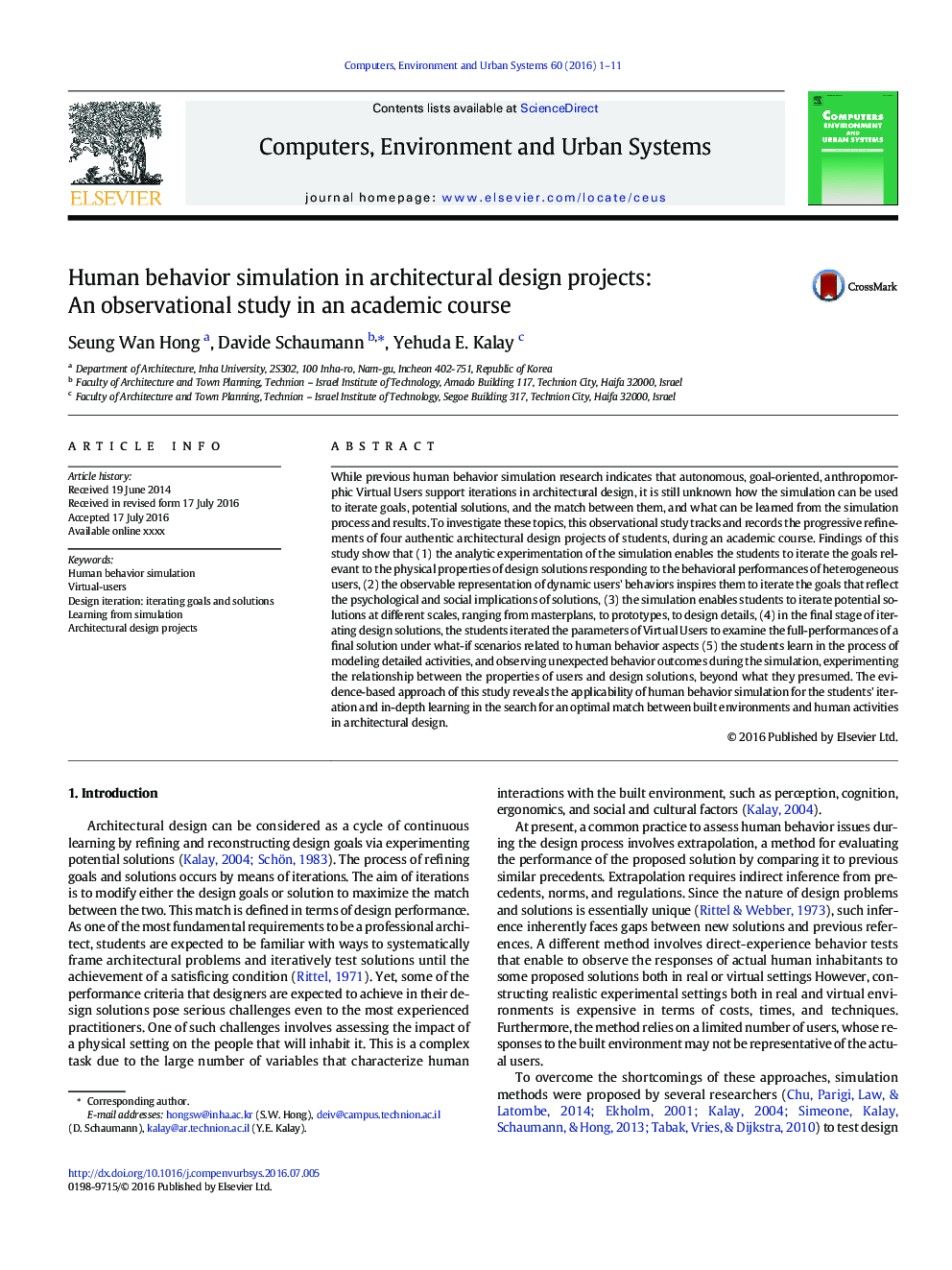| کد مقاله | کد نشریه | سال انتشار | مقاله انگلیسی | نسخه تمام متن |
|---|---|---|---|---|
| 506244 | 864880 | 2016 | 11 صفحه PDF | دانلود رایگان |
• We observed how students used human behavior simulation to iterate goals and solutions in architectural design projects.
• The simulation method relies on Virtual Users, goal-oriented agents that mimic human activities in virtual environments.
• Students iterated goals relevant to functional, psychological and social aspects of design solutions.
• Students iterated solutions from prototypes (small scale) to master plans (large scale), and vice versa.
• Students learned from analytical experimentations and from unexpected agents’ behavior.
While previous human behavior simulation research indicates that autonomous, goal-oriented, anthropomorphic Virtual Users support iterations in architectural design, it is still unknown how the simulation can be used to iterate goals, potential solutions, and the match between them, and what can be learned from the simulation process and results. To investigate these topics, this observational study tracks and records the progressive refinements of four authentic architectural design projects of students, during an academic course. Findings of this study show that (1) the analytic experimentation of the simulation enables the students to iterate the goals relevant to the physical properties of design solutions responding to the behavioral performances of heterogeneous users, (2) the observable representation of dynamic users' behaviors inspires them to iterate the goals that reflect the psychological and social implications of solutions, (3) the simulation enables students to iterate potential solutions at different scales, ranging from masterplans, to prototypes, to design details, (4) in the final stage of iterating design solutions, the students iterated the parameters of Virtual Users to examine the full-performances of a final solution under what-if scenarios related to human behavior aspects (5) the students learn in the process of modeling detailed activities, and observing unexpected behavior outcomes during the simulation, experimenting the relationship between the properties of users and design solutions, beyond what they presumed. The evidence-based approach of this study reveals the applicability of human behavior simulation for the students' iteration and in-depth learning in the search for an optimal match between built environments and human activities in architectural design.
Journal: Computers, Environment and Urban Systems - Volume 60, November 2016, Pages 1–11
